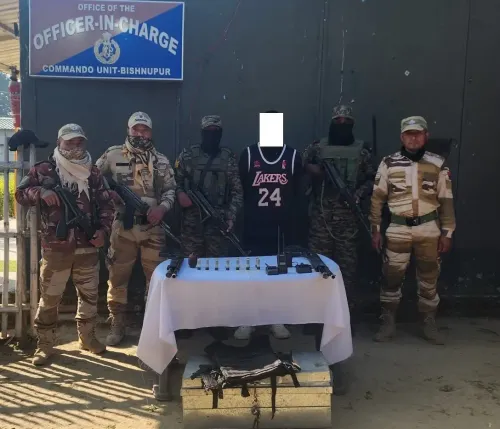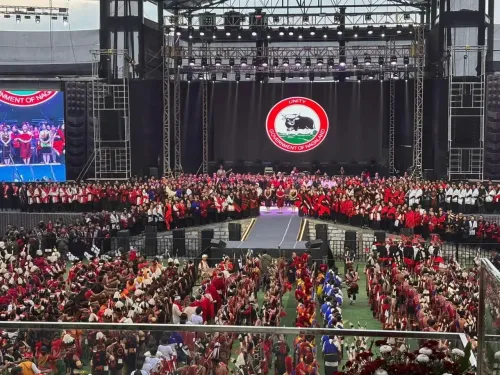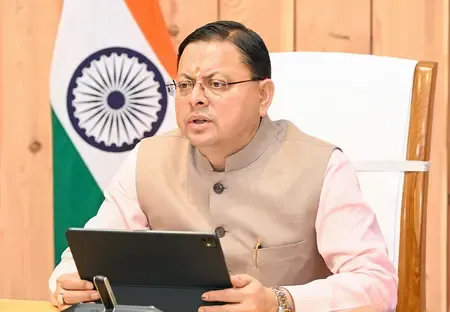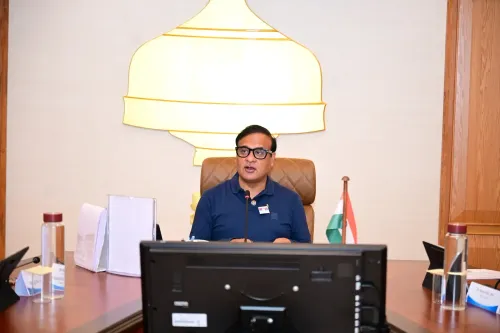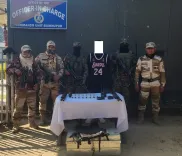Is Biometric Enrolment of Refugees from Myanmar and Bangladesh Happening in Mizoram?
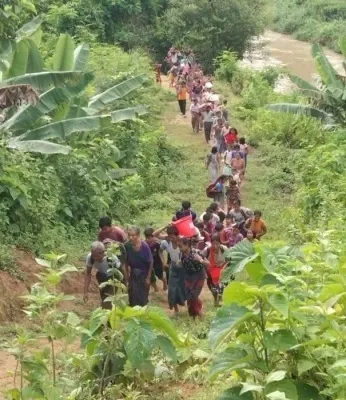
Synopsis
Key Takeaways
- Biometric enrolment is ongoing in Mizoram for refugees from Myanmar and Bangladesh.
- Technical issues are causing delays in the process.
- Over 33,000 refugees from Myanmar are currently in Mizoram.
- The Mizoram government has allocated funds to support the enrolment initiative.
- Training has been provided to officials to improve data collection efficiency.
Aizawl, Aug 8 (NationPress) The process of biometric enrolment for refugees from Myanmar and Bangladesh is currently being conducted across all 11 districts of Mizoram, as reported by officials on Friday.
A senior representative from the Mizoram Home Department acknowledged that while the biometric enrolment is progressing at a slow pace, efforts are being made to hasten the process.
The biometric enrolment initiative was first launched in Serchhip district on July 30, followed by other districts.
As of Friday, only 11,000 refugees' biometric and biographic data have been recorded. Challenges, including technical issues with electronic devices and poor connectivity in remote areas, have hindered progress.
Champhai district, which accommodates the largest number of over 13,580 Myanmar refugees, has struggled to collect biometrics since it commenced the process on July 31 and is encountering similar technical difficulties.
Mizoram Chief Minister Lalduhoma’s political advisor, Lalmuanpuia Punte, responsible for overseeing refugee matters, stated that it remains uncertain when the biometric enrolment will be finalized.
Currently, approximately 33,000 refugees from Myanmar reside in Mizoram, along with more than 2,370 refugees from the Chittagong Hill Tracts of southeastern Bangladesh, primarily in Lawngtlai district.
Following directives from the Union Ministry of Home Affairs (MHA), the Mizoram government has initiated the biometric enrolment for these refugees.
The MHA is set to cover the costs associated with biometric data collection, while the Mizoram government has allocated Rs 38 lakh to kickstart the initiative.
Recently, the Mizoram government conducted extensive training for district-level officials to facilitate the collection of biometric and biographic data for refugees in the state, which shares a 510 km and 318 km unfenced international border with Myanmar and Bangladesh, respectively.
Since the military coup in Myanmar in February 2021, refugees, including women and children, have been seeking refuge in Mizoram, with their numbers now approaching 33,000.
The Bawm community from Bangladesh's CHT has also been living in Mizoram for over two years, having fled due to ethnic conflicts arising from the Bangladesh Army's crackdown on the tribals.
The MHA had previously instructed the governments of both Manipur and Mizoram to gather the biographic and biometric details of "illegal migrants" and to expedite the process.
Most of the Myanmar refugees belong to the Chin tribes, sharing significant ethnic and cultural similarities with the predominant Mizos of Mizoram, and are currently residing in camps and with relatives across the state's 11 districts.
The Bawm, also referred to as Bawmzo, are a small ethnic group that primarily inhabits the CHT of Bangladesh and shares strong ethnic and cultural ties with the majority Mizos of Mizoram.
The Chin state of Myanmar is bordered by six Mizoram districts—Champhai, Siaha, Lawngtlai, Hnahthial, Saitual, and Serchhip—over a span of 510 km, while three Mizoram districts—Mamit, Lunglei, and Lawngtlai—share a 318 km border with Bangladesh.


